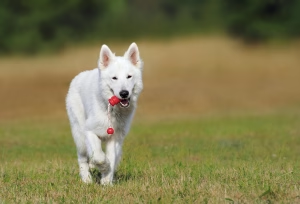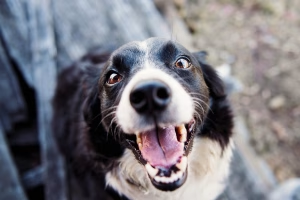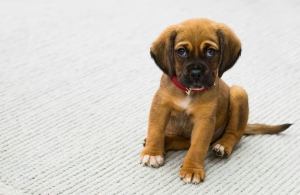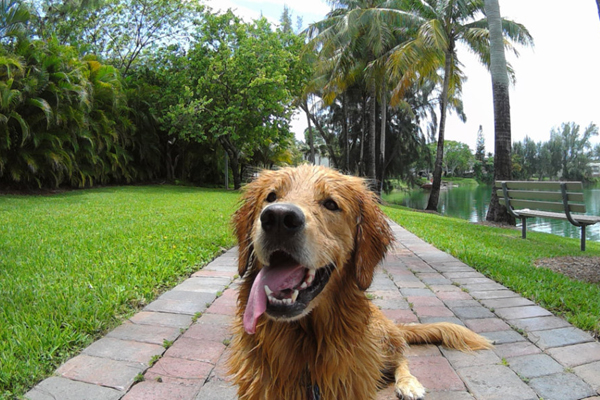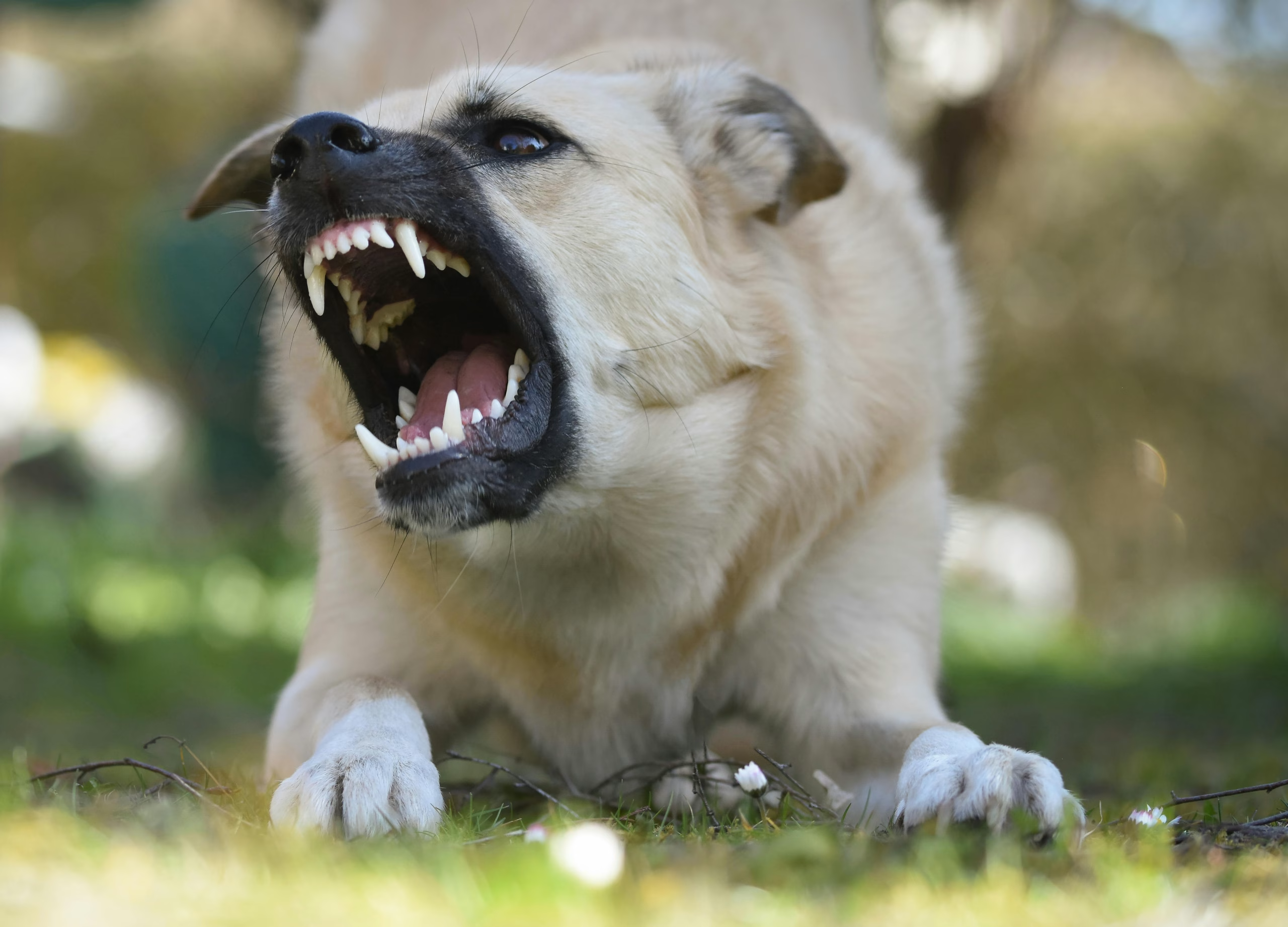
When a dog reacts suddenly to a trigger — another dog, a person, or even a sound — They’re communicating discomfort, fear, uncertainty, or frustration. What they need most isn’t force or control, but calm leadership and structure that helps them feel safe.
Many owners think the solution lies in distracting the behaviour, but lasting change comes from helping the dog feel calm enough not to react in the first place. The aim is to guide the dog emotionally, reduce confusion, and give them strategies to cope with life’s challenges.
Here are five essential tips to help you understand and calm reactive dogs in a way that complements structured training and builds trust between you and your dog.
Tip 1 – Stages: from calmest place to most chaotic environment
Progress with reactive dogs should always be planned in stages. Think of it like a ladder that starts in the calmest environment and gradually moves toward the most stimulating one. Each stage builds confidence and understanding before introducing the next.
Many owners unknowingly rush this process, thinking exposure means “throw them in and hope they get used to it.” In reality, dogs need gradual exposure to triggers in a controlled, predictable way. Skipping stages often causes setbacks because the dog’s emotions outpace their ability to cope.
Start in a quiet, familiar space such as the home or garden. Once the dog can stay relaxed there, move to a calm street or empty park, then slowly to busier settings. The jump from calm to chaotic should never feel sudden.
When you plan exposure like this, the dog learns that each new level still leads to safety and calm. They start to trust you as their guide. The key is to move forward only when the dog shows real signs of relaxation — soft eyes, loose muscles, calm breathing, and responsiveness.
This approach prevents overwhelm and helps the dog process the world at a pace they can handle. Each calm experience becomes a building block for the next.
Tip 2 – Praise and reward: show them when all is okay
Reactive dogs often live in a state of anticipation. They’re waiting for something to go wrong, so their stress levels sit higher than normal. Your job is to show them that when triggers appear, life stays calm and even enjoyable.
Praise and reward are how you create new emotional associations. When a dog sees another dog and remains calm, you calmly praise or give a treat to mark the moment. Over time, the dog learns that other dogs predict something positive rather than something threatening.
The way you deliver praise matters. Keep your energy low and relaxed. Over-excited praise can increase arousal, which defeats the purpose. The goal isn’t to distract them from the trigger but to change how they feel about it.
Rewards also give the dog something to focus on besides the trigger. They learn that when they notice another dog, they should look to you for guidance. This shift in focus helps them stay connected rather than spiralling into reactivity.
You’re essentially teaching emotional safety through consistency — the dog learns that your calm presence and fair timing are reliable signals that the world is safe.
Tip 3 – Pause and let the dog process the information
Reactivity often happens because the dog doesn’t get enough time to process what’s happening. We rush forward, and they’re forced to make split-second decisions with no support. A reactive dog needs time to absorb and interpret information before moving forward again.
When you sense tension — maybe the dog freezes, stiffens, licks their lips, yawns, or avoids eye contact — it’s a sign they’re processing. Instead of dragging them on or flooding them with more stimulation, pause.
Give them space to watch, smell, and understand what’s going on. This moment of stillness can stop a reaction before it happens. It’s also where trust grows. The dog realises you aren’t pushing them through discomfort; you’re helping them manage it.
Learning to recognise these small signs is crucial. Early indicators of stress include:
-
Head turning away from the trigger
-
Slow or shallow breathing
-
Tension through the neck and shoulders
-
Ears shifting forward and back rapidly
-
Tail movement changing from loose to stiff
-
Excessive sniffing or displacement behaviour
Pausing doesn’t mean giving up. It means respecting the dog’s emotional capacity. Once they’ve taken in the information and relaxed again, continue calmly. Over time, this teaches them that they can observe the world without reacting.

Tip 4 – Clear language: be seen to provide safety
Dogs take constant emotional cues from the people around them. If you appear anxious, uncertain, or reactive yourself, they’ll feel they need to take charge. The moment they believe you’re not in control of the situation, they step in — barking, lunging, or guarding to fill that gap.
Clear language isn’t just about words; it’s about your whole communication style. Stay composed, move with purpose, and keep your tone calm. Your body language should say, “I’m in control, you’re safe.”
Avoid shouting or over-commanding. A reactive dog doesn’t need more noise or tension. They need quiet confidence from you. Even when you’re correcting or redirecting, keep your energy steady and your voice level.
Every movement you make communicates something. If you freeze or tighten the lead, they’ll mirror it. If you breathe deeply and guide smoothly, they’ll start to soften.
You’re showing the dog that you handle all situations, no matter how chaotic, with a cool head. That calm leadership satisfies their safety needs and allows them to relax.
When working with reactive dogs, this principle is non-negotiable: if you want calm from them, you must first be calm yourself.
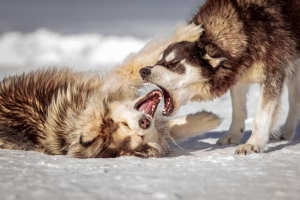
Tip 5 – Give the dog an outlet: release stress through movement and engagement
Reactive dogs often hold onto built-up energy and stress. Without proper release, it stays trapped and fuels overreactions. Physical outlets and mental engagement are essential parts of emotional recovery.
Exercise alone isn’t the full answer, but it’s a key part of the solution. A reactive dog who’s been lying idle all day is more likely to react to a trigger simply because their energy has nowhere else to go.
Find ways to help your dog burn off stress before or after exposure work. A run in an empty field, a game of controlled fetch, or scent-based searches can all help release tension. Mental outlets are equally valuable — puzzle toys, short obedience sessions, and calm enrichment activities give the brain something constructive to focus on.
The goal is balance. You’re not exhausting the dog; you’re helping them regulate energy levels so that daily life feels easier to handle.
Also consider emotional decompression. A long line walk in a quiet, natural area — away from streets and crowds — allows the dog to explore and reset. That sense of freedom helps lower overall arousal levels, which in turn reduces reactivity in everyday settings.
A balanced dog who regularly releases tension will be far better equipped to stay composed around triggers.
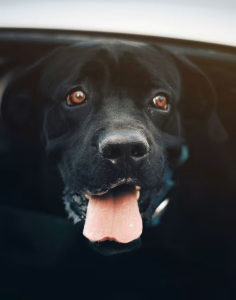
Putting it all together
When you combine these five principles — structured stages, praise, pausing, clear communication, and balanced outlets — you create a complete framework for calming reactive dogs.
Think of it as a cycle:
-
Plan the stage. Set the dog up to succeed in an environment they can handle.
-
Observe and praise calmness. Mark the right behaviours so they know what works.
-
Pause when needed. Give space to process and recover.
-
Lead with clarity. Show composure and consistency.
-
Provide outlets. Balance the emotional load with physical and mental release.
This process isn’t linear — progress often comes in small, steady steps. Some days you’ll move forward, others you’ll return to an easier stage. What matters is consistency and emotional stability. Every calm repetition strengthens trust and rewires the dog’s response.
Reactive dogs are not broken or “bad.” They’re simply overloaded and trying to make sense of their world. By guiding them patiently through these stages, you help them rebuild confidence and rediscover peace in everyday situations.
Common mistakes to avoid
-
Rushing exposure. The dog isn’t ready for busy areas just because they managed one calm walk. Stay at each stage until relaxation is natural.
-
Overusing treats. Rewards should reinforce calm behaviour, not mask anxiety. Make sure the dog is genuinely calm, not eating through stress.
-
Tight leads and tense posture. This communicates uncertainty. Keep the lead loose and your body relaxed.
-
Neglecting rest. Reactive dogs often struggle to switch off. Ensure they get proper downtime in a quiet environment.
-
Inconsistent routines. Predictability builds security. Keep feeding, walks, and training times steady while your dog adjusts.
Final thoughts
Calming a reactive dog isn’t about finding a quick fix — it’s about creating a life that meets their emotional needs and builds trust through steady leadership. You can only ask for calm once you’ve provided safety, structure, and direction.
Over time, the same dog who once barked and lunged at every distraction can learn to walk past triggers with quiet confidence. It’s not magic; it’s the result of meeting their emotional needs in a consistent and balanced way.
If you remain patient, observant, and grounded, you’ll start to see moments of change — a glance toward you instead of a bark, a calmer tail, a softer eye. Those moments are where transformation begins.
If you need help calming your dog’s reactivity, check out these links:
Reactive Dog Training in London: https://www.dogtraininginlondon.com/reactive-dog-training
Dog Behaviourist London – Book a Consultation: https://www.dogtraininginlondon.com/dog-behaviourist-london
Understanding Dog Behaviour Videos: https://www.dogtraininginlondon.com/understanding-dog-behaviour-videos
Return to Home Page: https://www.dogtraininginlondon.com


